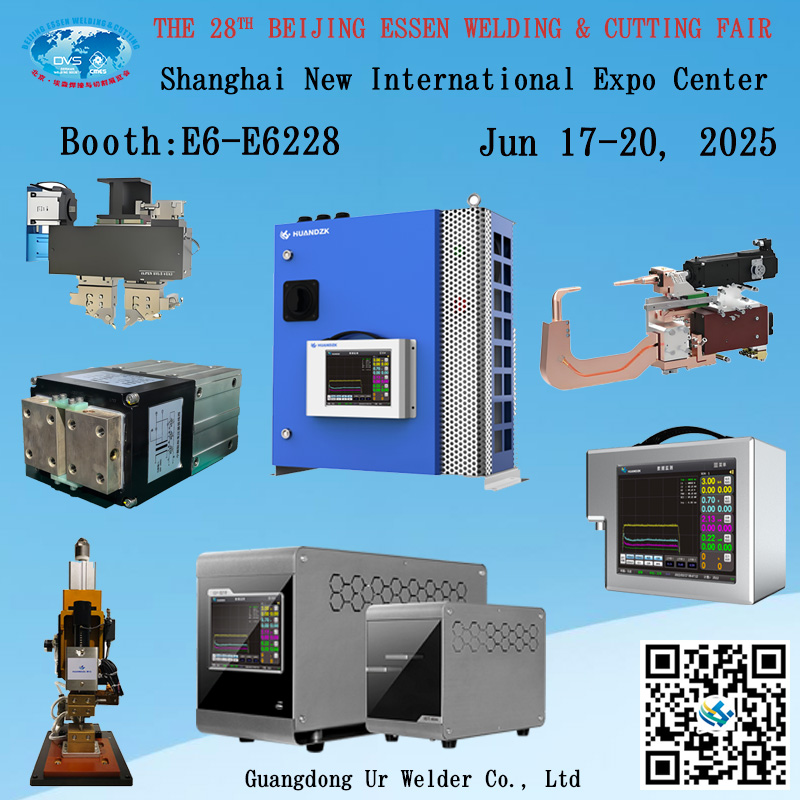
High Efficiency, Intelligence, and Precision: AC Inverter Spot Welding Power Supply Leading the Welding Revolution
2025-06-14 09:18With the continuous advancement of Industry 4.0 and intelligent manufacturing, welding technology—an essential part of the manufacturing process—is undergoing a profound transformation. Among emerging welding solutions, the AC inverter spot welding power supply has quickly gained popularity for its high efficiency, energy savings, and precise control. The AC inverter spot welding power supply is now widely applied in industries such as automotive manufacturing, battery production, electronics, and aerospace.

Technical Principle
The AC inverter spot resistance welding supplies utilizes high-frequency switching components (such as IGBTs) to chop the input AC power. Through rectification, filtering, and re-inversion, the system delivers a stable welding current suited for modern production demands. This advanced process not only enhances energy conversion efficiency but also significantly reduces the size and weight of the power unit, making AC inverter spot resistance welding supplies more portable and flexible for a variety of applications.
Key Technical Advantages
1. High Efficiency and Energy Saving
Traditional spot welding power supplies typically operate at lower frequencies and suffer from high energy losses. In contrast, the AC inverter spot welding power supply significantly improves conversion efficiency using high-frequency inverter technology. The AC inverter spot welding power supply minimizes reactive power loss and optimizes heat input, reducing energy waste and ensuring superior thermal efficiency during the welding process.
2. Precision Control
Equipped with DSP-based digital control systems, the AC inverter spot welding power supply provides multi-stage current control and real-time monitoring of welding parameters such as current, voltage, and time. This precision ensures consistent weld quality and is particularly beneficial for thin-sheet welding, where excessive heat input can lead to deformation or cracking. Controlled heat ensures high-strength, defect-free welds.
3. Wide Adaptability
Whether working with low-carbon steel, stainless steel, or aluminum alloys, the AC inverter spot welding power supply supports flexible parameter settings to adapt to different materials and thicknesses. The AC inverter spot welding power supply offers customizable waveforms and pulse configurations to meet diverse welding requirements, making the AC inverter spot welding power supply a highly versatile solution across industries.
Innovative Applications
1. Integration into Smart Production Lines
The AC inverter spot welding power supply can be seamlessly integrated into fully automated manufacturing lines. Combined with robotic arms or multi-axis systems, the AC inverter spot welding power supply enables automated processes from material handling and welding to quality inspection, enhancing productivity and product consistency.
2. Welding of Special Materials
In fields such as new energy and aerospace, materials often have unique physical and chemical properties that require highly controlled welding. Thanks to its precise output and stable arc characteristics, the AC inverter spot welding power supply meets the demanding requirements of welding advanced materials like high-strength steel or titanium alloys without compromising material integrity.
3. Mobile Welding Solutions
For field installations, emergency repairs, or on-site fabrication tasks, portability is crucial. Lightweight and compact, the AC inverter spot welding power supply is designed for mobility and rapid deployment. Certain high-end models even feature wireless communication modules, allowing for remote control and real-time data transmission—ideal for intelligent mobile welding operations.
Conclusion
In summary, the AC inverter spot resistance welding supplies offers remarkable advantages in efficiency, precision, and versatility, making AC inverter spot resistance welding supplies an indispensable tool in today’s advanced manufacturing environment. As digitalization and automation continue to evolve, this technology is expected to play an increasingly central role, driving the welding industry toward smarter, greener, and more adaptive solutions.
